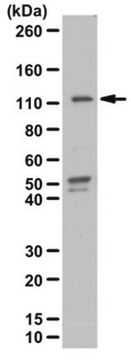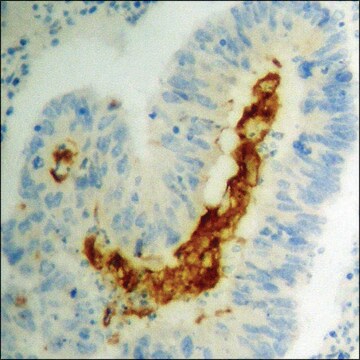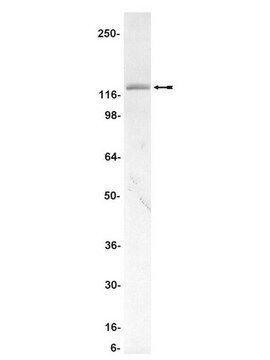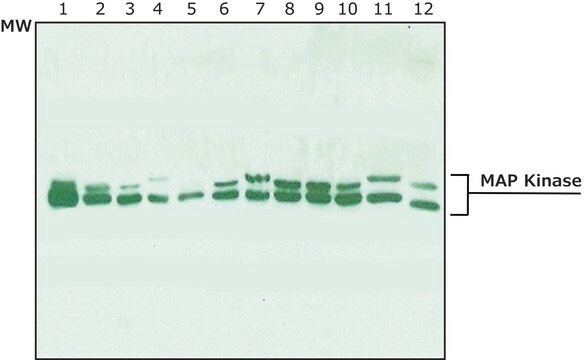07-224
Anti-phospho-STAT2 (Tyr689) Antibody
Upstate®, from rabbit
Sinónimos:
Anti-Anti-IMD44, Anti-Anti-ISGF-3, Anti-Anti-P113, Anti-Anti-PTORCH3, Anti-Anti-STAT113
About This Item
Productos recomendados
origen biológico
rabbit
Nivel de calidad
forma del anticuerpo
affinity isolated antibody
tipo de anticuerpo
primary antibodies
clon
polyclonal
purificado por
affinity chromatography
reactividad de especies
human, mouse
fabricante / nombre comercial
Upstate®
técnicas
immunoprecipitation (IP): suitable
inhibition assay: suitable
western blot: suitable
isotipo
IgG
Nº de acceso NCBI
Nº de acceso UniProt
Condiciones de envío
wet ice
modificación del objetivo postraduccional
phosphorylation (pTyr689)
Información sobre el gen
human ... STAT2(6773)
Descripción general
Especificidad
Inmunógeno
Aplicación
- Immunoprecipitation Analysis: 10 µg from a representative lot immunoprecipitated phospho-STAT2 (Tyr689) in lysate from HeLa cells stimulated with Interferon and Interferon
- Peptide Inhibition Assay: Target band detection in lysate from HeLa cells stimulated with Interferon and Interferon was prevented by pre-blocking of a representative lot with the immunogen phosphopeptide, but not the corresponding non-phosphopeptide.
- Note: Actual optimal working dilutions must be determined by end user as specimens, and experimental conditions may vary with the end user.
Calidad
Descripción de destino
Nota de análisis
IFN-gamma then IFN-alpha treated HeLa cell lysate
Otras notas
Información legal
¿No encuentra el producto adecuado?
Pruebe nuestro Herramienta de selección de productos.
Código de clase de almacenamiento
12 - Non Combustible Liquids
Clase de riesgo para el agua (WGK)
WGK 1
Punto de inflamabilidad (°F)
Not applicable
Punto de inflamabilidad (°C)
Not applicable
Certificados de análisis (COA)
Busque Certificados de análisis (COA) introduciendo el número de lote del producto. Los números de lote se encuentran en la etiqueta del producto después de las palabras «Lot» o «Batch»
¿Ya tiene este producto?
Encuentre la documentación para los productos que ha comprado recientemente en la Biblioteca de documentos.
Nuestro equipo de científicos tiene experiencia en todas las áreas de investigación: Ciencias de la vida, Ciencia de los materiales, Síntesis química, Cromatografía, Analítica y muchas otras.
Póngase en contacto con el Servicio técnico







